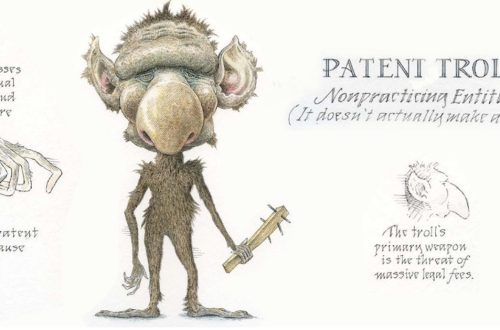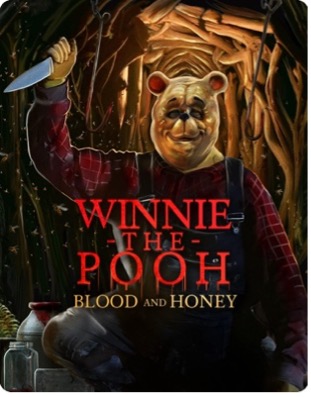By: Anthony Marino
Many social media users subscribe to one or more Instagram or Twitter accounts that are considered, “joke aggregate accounts.” A joke aggregate account is one that supplies its followers with new memes, tweets, and tumblr posts in one convenient location every day. Moreover, as these types of accounts gain more followers and begin to generate revenue, the original content creator(s) will more likely attempt to reclaim their slice of the pie. Last August, Josh Ostrovsky (@TheFatJewish on Instagram) was accused of stealing jokes from other comedians and posting them on his Instagram account. Now, Ostrovsky credits these the original content creators by tagging their Instagram or Twitter handles in his posts. Yet, is this credit enough to stop the original content creators from suing for damages or injunctive relief? Can social media posts even be granted any type of actionable intellectual property protection? If so, would a joke post qualify? Facebook, Instagram, and Twitter state in their terms of service that users retain ownership of all of their “content,” but these sites have not specified the exact type of ownership rights or protection that the “content” must maintain. Copyright and trademark law seem to be the most logical intellectual property schemes applicable to this protect such social media posts.
Legal Background
17 U.S.C. § 102 sets forth the minimum requirements to grant a copyright, stating it must be an “original [work] of authorship fixed in any tangible medium of expression.” Modern courts have applied 17 U.S.C. § 102 to electronic works and finds that “fixation present” when created work is written onto the computer RAM (word processor) or hard disk (when it is saved). See MAI Sys. Corp. v. Peak Computer, Inc., 991 F.2d 511, 519 (9th Cir. 1993). In other words, fixation is a non-issue for any work created on an electronic device, which allows information to be typed or saved. A central hurdle in efforts to grant a social media post copyright protection is one common law requirement, where “a work containing a modicum of creativity.” See Feist Publ’ns, Inc. v. Rural Tel. Serv. Co., 499 U.S. 340, 345 (1991). Although, “modicum of creativity” is not explicitly defined, the courts have used this legal term of art and standard to exclude simple recitations of facts that do not contain unique organization. Id. In turn, the vast majority of social media posts become non-copyrightable because it only contains a simple fact(s). Social media posts that amount to “OMG, it’s raining!;” “I am at Disneyland right now!;” and “Happy Birthday!” are common posts that populate social media feeds and are simple recitations of particular reactions/facts surrounding one’s life experiences. This lack of “modicum of creativity” renders the acquisition of copyright protection impossible for the vast majority of social media posts.
Trademark Law originates from and still exists within common law. Although, trademark law became codified under Congress, otherwise known to be the Lanham Act, 15 U.S.C. §§ 1051 – 1141. The minimum requirements that are needed to obtain a valid trademark right is divided between two separate statutes, § 1127 and § 1051(a)(1). § 1127 defines a trademark as “any word, name, symbol or device . . . used by a person . . . to identify and distinguish his or her goods,” and is also called, “distinctiveness.” Moreover, § 1051(a)(1) requires that the mark be “used in commerce,” and is also called, “use respectively.” In Abercrombie & Fitch Co. v. Hunting World, Inc., 52 F.2d 4, 9 (5th Cir. 1976), it first described the “distinctiveness spectrum,” also known as the taxonomy of trademarks. The “distinctiveness spectrum,” spans from fanciful (most distinctive) to generic (least distinctive) and is analyzed in relation to the good or service protected by the created mark. Id. Marks that are found to be generic, in turn, are not eligible for trademark registrations and the opposite is true for arbitrary/fanciful marks. Id.
A social media post could establish “distinctiveness” sufficient to receive trademark rights, if it can be proven appurtenant to a product or service. For the vast majority of social media posts, it would be difficult to garner legal protection because most social media posts are not tied to a product or service. Even when a mark is tied to a good or service and becomes classified as distinctive, it can still become generic, also known as “genericide.” Genericide occurs to a mark when it no longer identifies the source of the product or service and becomes a term for that product or service. For example, the popular aspirin brand called, “Bayer” lost its ASPIRIN trademark for formulations of acetylsalicylic acid. See generally Bayer Co. v. United Drug Co., 272 F. 505 (S.D.N.Y. 1921). Thus, posts that are publically shared without attribution to the original owner, can lead to trademark genericide because it loses its self-product identification power.
The “use requirement” is the second cornerstone of establishing a trademark, and can be fulfilled through either actual use or constructive use as defined in 15 U.S.C. § 1127. § 1127 defines act use or constructive use where any commerce action that satisfies the Commerce Clause of the Constitution, also satisfies the “use requirement” to establish a trademark. Moreover, a trademark requires that the owner prevent or stop trademark infringement through successful monitoring or license agreements. An owner’s failure to prevent or stop trademark infringement can result in the mark being deemed generic and abandoned. Therefore, trademark infringement can be difficult to prove because posts can be easily modified to remove its source and then quickly shared. Moreover, it is highly likely that any mark can be posted on a social media platform and quickly become generic without an impossibly extensive monitoring or licensing program.
It remains untested whether copyright or trademark protection can be applied to common social media posts, however, the courts have analyzed whether a joke is applicable to such protection. Foxworthy v. Custom Tees, Inc., 879 F. Supp. 1200 (N.D. Ga. 1995) involved legal claims of copyright and trademark infringement. The joke at dispute was: “You might be a redneck, if…” and it became very popular during the late 90’s and a staple of Jeff Foxworthy’s comedy routine. In Foxworthy, this type of joke was broken down into the setup of “you might be a redneck if” and punchline of “you have a home that’s mobile and four cars that aren’t.” Id at 1209. For a more in-depth example,“You might be a redneck, if you have a home that’s mobile and four cars that aren’t.” The plaintiff accused the defendant of trademark infringement for the setup of the joke and copyright infringement for the punchline of the joke. Id. Moreover, the plaintiff argued that the defendant had infringed on both pieces of intellectual property when the defendant created t-shirts with the joke printed on it. Id.
Foxworthy never went to trial, but the Judge issued a preliminary injunction, which required “a substantial likelihood that [the plaintiff would] ultimately prevail on the merits.” Id. When the court analyzed the issue of trademark infringement (the setup), the court departed from its traditional use and distinctiveness analyses, when it stated “that [the] phrase became his ‘hook’ or ‘catch phrase’ by which he became known.” Id. at 2010 (internal quotations omitted). And, when the court analyzed the issue of copyright protection (the punchline), it held that the setup “clearly evidenced a ‘modicum of intellectual labor.’” Id. at 1219 [Internal quotations omitted]. The court reasoned that the setup satisfied the standard from Feist, known as the “momicum of creativity” standard and that the punchlines “were not only [the plaintiff’s] own ideas, but his own expression.” Id. [Internal quotations omitted].
Application of Law to Social Media
A claim of copyright infringement for a punchline is a more likely to be a successful than a claim of trademark infringement for a joke set-up. However, there are still many challenges that a claim of copyright infringement will endure. The “original work of authorship” factor is easily satisfied when a social media posters (the creator) claims infringement, if the work is an original work of their creation. Also, the “fixation” factor can be easily fulfilled, when a social media poster types their work via the RAM of their computer, where it can be subsequently and temporarily stored before and while being transmitted onto a social media platform. And, the fact that social media posters like, Ostrovsky will repost screenshots of other individuals work, and now, tags his source- will not likely help a defendant’s case. The problem with a copyright, though, is the narrowness of the protection provided. As the Court in Feist stated, “[o]thers may copy the underlying facts from the publication, but not the precise words used to present them” or more simply put by the court in Foxworthy “[t]wo painters painting the same scene each own a copyright in their paintings.” Thus, a social media poster like Ostrovsky could write their own joke based on the same premise or modify the joke to the point, where it becomes his own work in order to avoid a valid claim of copyright infringement.
Moreover, the nature of the set-up for the meme jokes posted alike Ostrovsky’s Instagram tend to work against any type trademark protection. These types of “when you” memes are so ubiquitous that they cannot be identified with any specific source of comedy services. Mr. Ostrovsky himself credits a different source with every post he makes. When compared to the facts of Foxworthy, the case for a valid trademark becomes even weaker. No one comic is “known in the public” or “has created a number of marketable goods based upon” these types of meme jokes. It could scarcely be said that “a substantial segment of the viewing, listening, reading, and laughing public associate the phrase” with any one single comedian. If anything, these types of jokes are associated with internet culture as a whole, and thus would be found to have committed genericide long ago. Although, many comedians are credited for creating a trend or movement within their own community and a custom/code of conduct that exists among comedians in dealing with one of their own, who steals intellectual property from fellow artists. See Dotan Oliar and Christopher Springman, There’s No Free Laugh Anymore: The Emergence of Intellectual Property Norms and the Transformation of Stand-Up, 94 Va. L. Rev. 1787. Moreover, the cost barriers to trademark/copyright registration, which entitles owners to statutory damages and attorney fees have given rise to a self-regulation system, which includes shaming, assaulting, and blackballing joke thieves.
Conclusion
It is extremely unlikely that content posted on Mr. Ostrovsky’s Instagram will ever result in a lawsuit like Foxworthy, as he is obviously susceptible to comedy culture and their self-regulation. Even if a corporation stole a comedians jokes posted on social media, the terms of service for all large social media sites grant the site’s owners an unlimited license to use or re-license your content to whomever they choose. Any company wishing to use your posts on a t-shirt or in an advertisement simply need to obtain a license from the site, and need not risk an infringement suit from the content creator.
Anthony Marino is a 2L at the Sandra Day O’Connor College of Law at Arizona State University. He is an associate editor for the Sports & Entertainment Law Journal.
[easy-tweet tweet=”New Blog by Associate Editor, Anthony Marino about “Stealing Jokes on Social Media.””]





